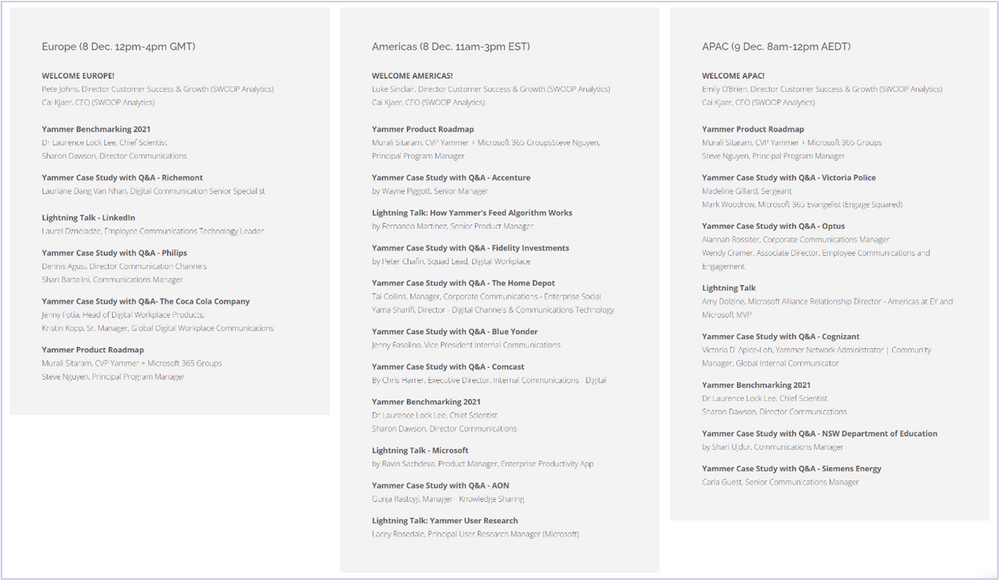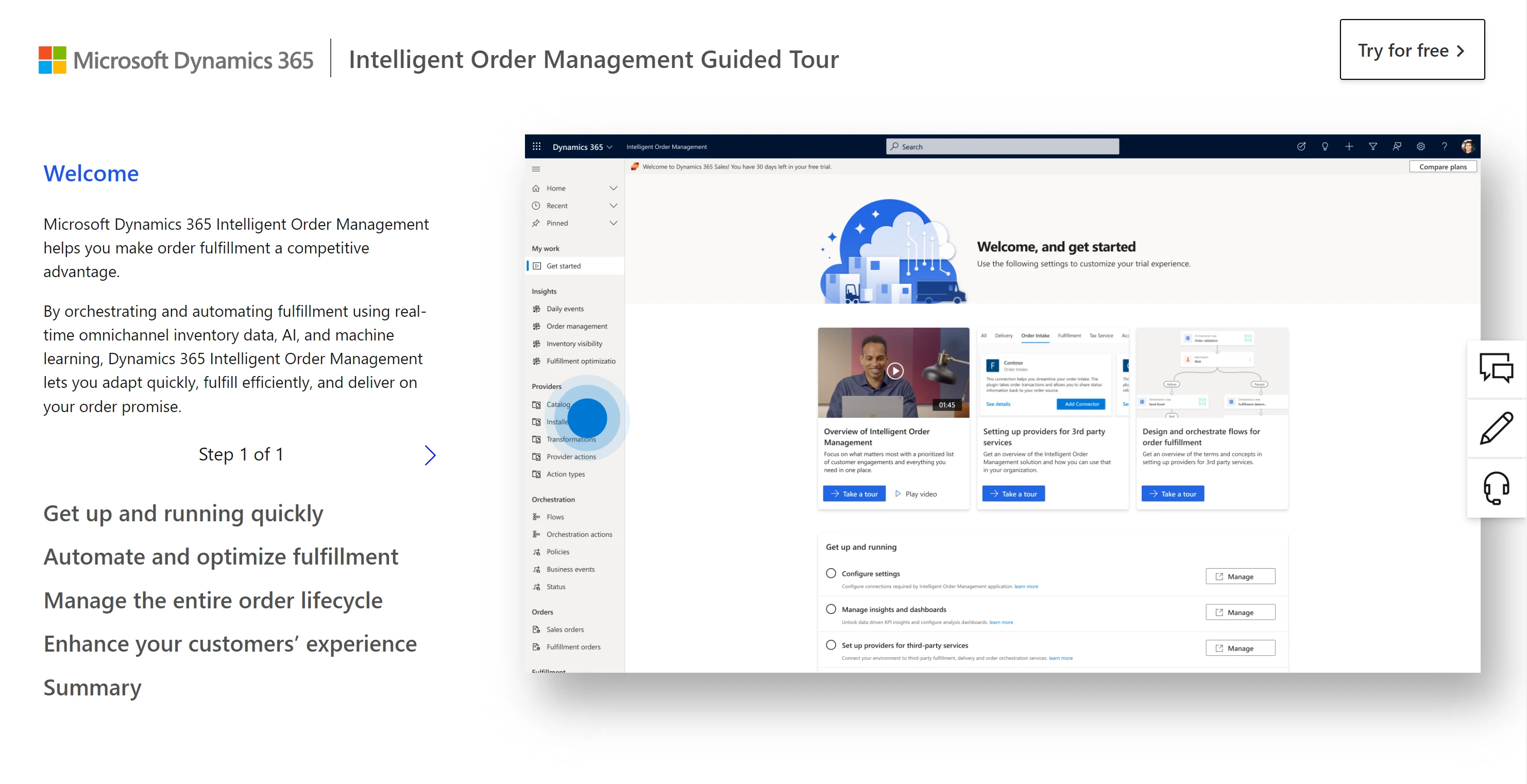
Register for the 2021 Yammer Festival Dec 8-9
This article is contributed. See the original author and article here.
We are excited to be partnering with SWOOP Analytics to host our 2021 Yammer Community Festival on December 8th-9th! This event has been curated and designed for our customers, for you to learn from each another and hear how to build culture and community in your own organizations. Whether you are just launching your Yammer network and not sure where to begin or are curious to hear what’s coming down the product pipeline, there are sessions for you!

Agenda
This virtual event will span across European, Americas, and Asia Pacific time zones. Look at the agenda to see an idea of the types of stories and sessions that will be available. All sessions will be recorded to be able to watch on demand following the event.

*Exact timing and content subject to change.
Speakers
We have an incredible line up of Yammer customer speakers that have a variety of experiences and types of organizations from across the world. They’ll share best practices, lessons learned and provide practical guidance that you’ll be able to take and use at your organization. You’ll also hear directly from Microsoft , including the product teams who build Yammer and learn more about the future of products like Microsoft Viva. You might see new faces and familiar brands that have great stories to share. Take a closer look at all the presenters here.
Nominate your colleagues for the Community Champion Award
The Yammer Community Champion Award is an opportunity to recognize passionate community managers around the world who are committed to employee engagement, knowledge sharing, and collaboration in their Yammer networks and communities.
As part of our first Yammer Community Festival, we will announce regional winners of the Yammer Community Champion Award.
Can you think of anyone who deserves this title? Tell us who you think should win this award!
There will be one winner per regional session and winners will be contacted in advance of session that they have been ‘shortlisted’ as a top contender for the Yammer Community Champion Award. This is to ensure the winners are present to virtually accept their award. Based on network size, the number of nominations per organization is not limited as there may be many opportunities within a company to submit a nomination.

Register today!
We’re running the event as an interactive Microsoft Teams meeting with Q&A enabled. Bring your questions and ideas as we want to make the chat component active, with many voices heard. Speakers are there to prompt conversations in chat and be prepared to unmute!
“We are so excited to present the future of Yammer to this community. We’ve heard from customers like you, that you want to connect and learn from the Yammer community of customers that exist across the globe. This is a great opportunity to showcase your success and learn from others in the community. We look forward to seeing you all at the festival!”
MURALI SITARAM
CVP Yammer+M365 Groups, Microsoft
Save your seat and register now!
FAQ
How much does this cost?
This event is free so invite your whole team!
Can I attend a session outside of my time zone?
Yes! Feel free to attend any session that fits your schedule, regardless of your location.
Will sessions be recorded?
Yes, sessions will be recorded and made available after the event.
How many people can I nominate for the Community Champion Award?
We do not have a set limit for number of nominations by organization or person. Feel free to nominate all the Community Champions you know!
What do the Community Champion Award members win?
There will be custom swag sent to each award winner.
Who should attend?
All roles and departments are welcome. Customer speakers will be a variety of backgrounds and roles within an organization and you’ll be sure to find similar roles that support the work you do, regardless if you are in marketing, communications, sales, product development or IT.












Recent Comments